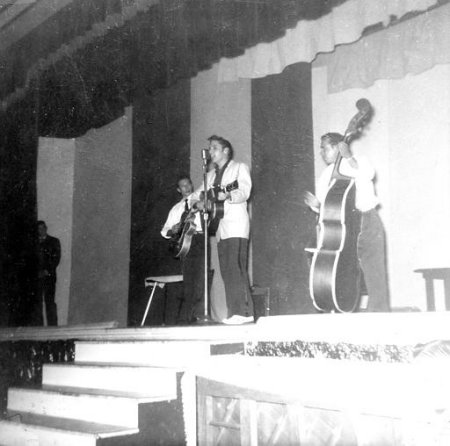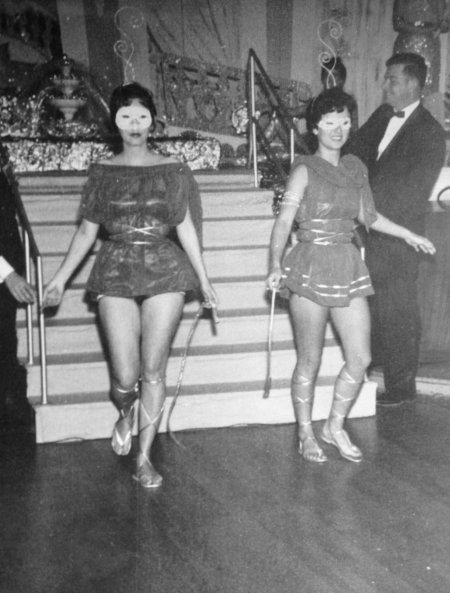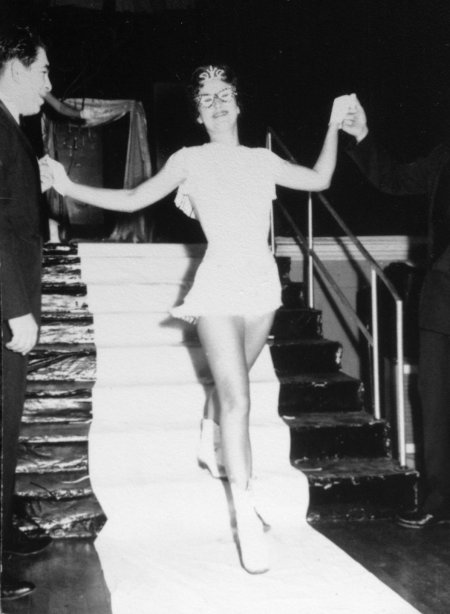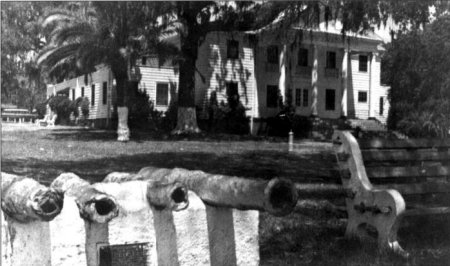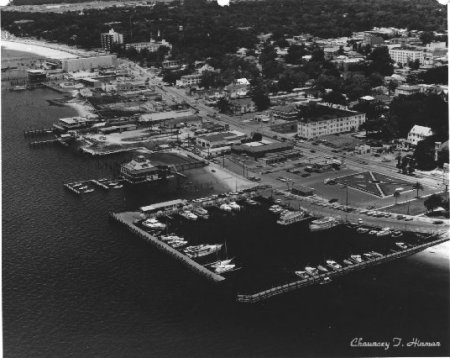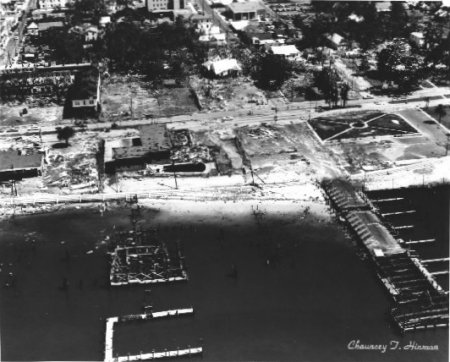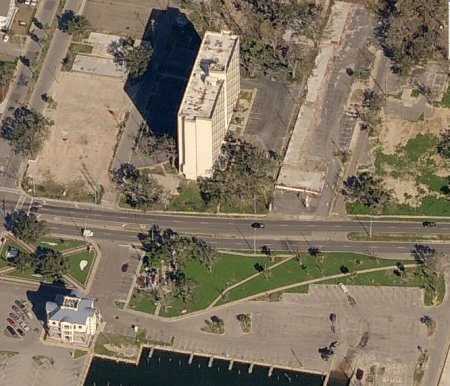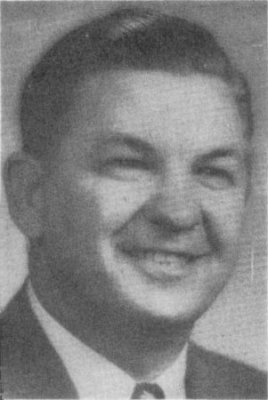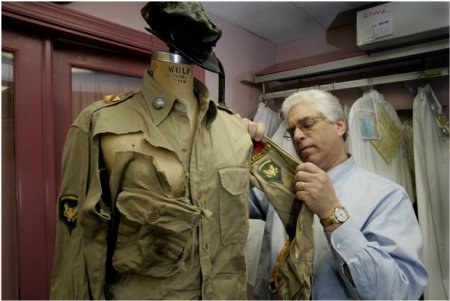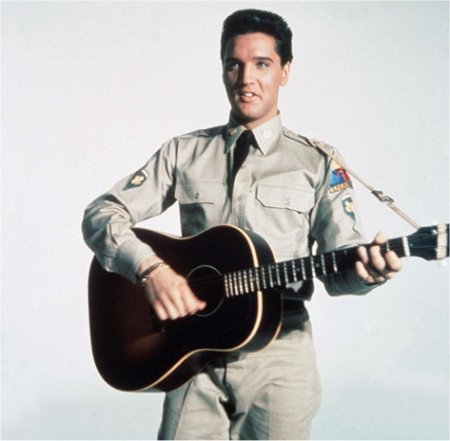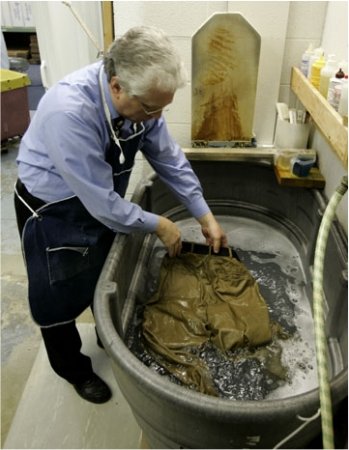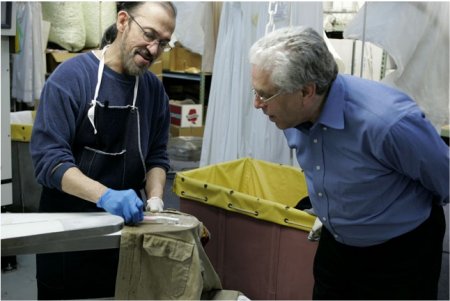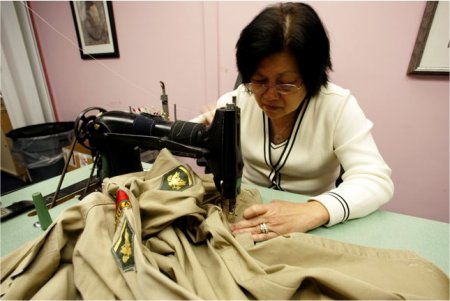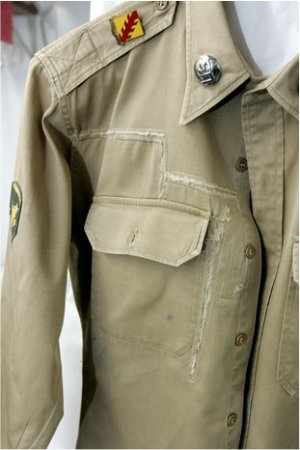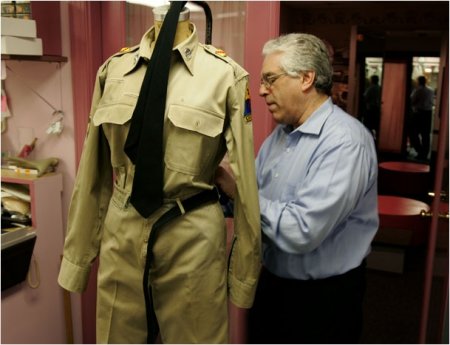 |
Slavonian Lodge The seafood industry is at the heart of Biloxi's culture and history, and ethnic diversity is at the heart of the industry. The arrival of Croatians (people of South Slavic origin mostly from Croatia, Bosnia and Herzegovina and nearby countries) in Biloxi, Mississippi is tied to the oyster industry which began in that city around 1880. Croats dominated the oyster and shrimp trade in Biloxi and also became very active socially, having a CFU (Croatian Fraternal Union) lodge as early as the1930s . The Croats had their own hall, Slavonian Hall (1939).1
The lodge, a 13,000 square-foot building which was able to accommodate 600 people, was located on the corner of Myrtle and First streets on Point Cadet. Originally the Austrian Benevolent Association, and then the Slavonian Benevolent Association, the various name changes of the Slavic Benevolent Association indicate that the lodge welcomed members from various Slavic ethnic groups: Croats, Serbs, Slavonians.1
Predominantly Catholic, outside the lodge stood a statue of their patron saint, St. Nicola. Flanking the statue were cement tablets inscribed with the names of all the Slavic families who had settled on the Coast. In the beginning, only full-blooded Slavonian men could join, but the dynamics of culture and environment stimulated an alteration of cultural boundaries. Full-blooded Slavonians were hard to come by, and so eventually they opened the doors to men whose fathers were Slavonian. In recent years they have allowed sons of Slavonian women to join.1
The lodge had a large dining/meeting area, a kitchen, a barroom, and card playing rooms upstairs. It hosted wedding receptions, banquets, and a dinner during the annual golf tournament fundraiser. The dining/meeting area was an open room with the stage at the distant end from the entrance.1 The hall has often been used to host dances for local youth.
Hanging on the walls inside were poster size photographs of the old Biloxi schooners. Some of the men could point to a boat and name the builder and/or the owner, the boat's dimensions, and relate remarkable stories about the vessels. When asked about Slavonian heritage and about the seafood culture, lodge members really opened up, and the stories came rolling out.1
Slavonian women have their own organization, the Ladies' Auxiliary. The day before Christmas Eve the Ladies' Auxiliary gathered at the lodge to prepare pusharatas, a Slavonian doughnut filled with fruit, cinnamon, nutmeg, raisins, and other delicacies. Each woman has her own recipe, every one different, and none wrong. They would sell over 500 dozen pusharatas to Biloxians before the day was over.1 Frank "Yankie" Barhanovich, a Biloxi native and district manager for American National Insurance Company who had gotten into the talent booking business partly because his young daughter was a rising star, was booking the Slavonian Lodge. Martha Ann Barhanovich, for a time, recorded under the name of Ann Raye on Decca. Yankie said in an interview. "We met Elvis at Jesuit (High School) auditorium. We played two shows. One in the afternoon, one at night. They paid each of them a hundred and fifty dollars."2
Martha (Ebberman), now a grandmother and owner of Burger Burger restaurant, recalls: "I said to Daddy, 'You need to book him in Biloxi.' I saw something in Elvis. I was a teenager myself. Daddy was booking all these people not as young as Elvis, and well, I just knew Daddy needed to book Elvis for people my age. But I don't think he was too impressed the first time, not with the way Elvis jiggled.3 Barhanovich booked Elvis at the Slavonian Lodge after meeting him, wanting to try him out.2
On June 26, 1955, Elvis, Scotty and Bill performed in Biloxi at the lodge. The lodge that night was dedicating its new air conditioning unit, making it the newest air conditioned venue along the coast.2 An advertisement in the Biloxi newspaper that day before read:
Rosetti stated that the teenagers just love him and with his nation-wide popularity this good looking youngster who dresses in pink will be sure to have the young ’uns—from 9 to 90 with him all the way. From the response and the telephone calls received for tickets, it is expected to be a sellout, according to Rosetti. The success of "That's All Right Mama" and "Blue Moon of Kentucky" started a series of hits including "I Don't Core if the Sun Don’t Shine," "Good Rockin' Tonight" and his latest release ..... Those who didn’t catch Elvis’ appearance at the Slavonian Lodge were being told as early as the next day what they missed, and as early as two weeks later, they were drowning in their sorrows as Elvis’ reputation began mushrooming. "It was so different from any type of music, that you couldn’t even relate to it at the time," said Salvadore "Penue" Taranto, who played in Johnny Ellmer’s Rockets, the band that Elvis filled in for that night. Barhanovich "asked us if we would mind if he brought Elvis in for one night," said Taranto. "We didn’t mind. It was a Sunday night and we wanted a night off. I had heard Elvis on the juke box before the Slavonian gig, so I dropped by the Lodge to see him. We used to play the Lodge and we’d get three hundred, four hundred kids in there. On Elvis’ first show, they had about fifty to seventy-five. It was just real different, Rockabilly. Here was everybody making fun of this guy shaking like he had something wrong with him. But what he did, he did good. When he popped that first hit, he really took off!"3 John Lewis was a teenager working part time at Rosetti's restaurant on Point Cadet in Biloxi, a few doors down from the Slavonian Lodge. The lodge often had dances for the Coast's young people, for a whopping $1.25. Rosetti's profited from these events because people were hungry and would come for po-boys, the French bread sandwich that Vincent Rosetti popularized. Barq's, the now popular national root beer, was created in Biloxi so it was commonly served there, too.3
Lewis would go to the dances but during breaks run over to Rosetti's to help with the expected crowds. Lewis, at 68, recalled: "Mr. Rosetti was president of the Slavonian Lodge, too, and whenever a band took an intermission, he'd bring them down to the restaurant kitchen to feed them. Elvis wasn't well known at that time but it was a nice band. I remember bringing Elvis a Barq's root beer, and if my memory serves me right, Mr. Rosetti fixed them all shrimp po-boys. Every time I gave Elvis! s something, he thanked me politely. But I noticed every time I walked by his table that he was a nail-bitter. He really bit his fingernails down. I remember that because my grandmother would have knocked my head off if she'd caught me doing it. I knew that wasn't the thing to do, so I was surprised to see Elvis doing it."3 Though this was Elvis' only show at the Lodge, Barhanovich booked him the next two nights at the Keesler Airmen's club. Barhanovich remembers Elvis wasn’t an instant hit in Biloxi. "My brother members at the Lodge were all making fun of me for bringing in this hillbilly," he laughed. "They booed him at Keesler several times when we did the shows out there."3 The following November Barhanovich brought Elvis back for a show at the Bilxoi Community House and two more nights at Keesler. After that he became just too expensive.
Today the Croatian community is still active in the seafood industry but is also present in various professions while demonstrating an active role in community and political leadership. In August of 2005, Hurricane Katrina devastated the Mississippi Gulf Coast displacing approximately half of the 10,000 Croatians living there. The tidal surge swept inland for ten miles, destroying the Slavonian Lodge, as well as almost all of the Croatian community in East Biloxi.4
At the time of Katrina, the Slavonian society's president was Andrew Gilich and he vowed that the Slavonian Lodge will be rebuilt on East Biloxi Avenue.4 The Slavics believe in staying on the Point. They've received several enticing offers since the hurricane to sell their corner lot. So members are busy searching for a new property to call home.5
As of November of 2008, the City Hall approved variances which will allow plans for construction of a new lodge in the Third Street neighborhood on Point Cadet. The association is temporarily meeting in downtown Biloxi where they took over some office space on Main Street.6 The Slavic Ladies Auxiliary to date has continued having its annual pusharata sale.
page added December 10, 2008 1
excerpt from Mississippi Folklife: Culture and Identity in the Biloxi Seafood Industry by Aimee Schmidt Airmen's Club - Keesler AFB Keesler Air Force Base in Biloxi, MS was activated in 1941 as an Army Air base when the Air Force was still part of the Army. It was named in honor of 2nd Lieutenant Samuel Reeves Keesler, Jr., of Greenwood, MS who had died of wounds during WWI while serving in France as an aerial observer with 24th Aero Squadron, U.S. Army Air Service.1
The Airmen's Club at Keesler opened in 1951 as a recreation and entertainment center for enlisted service personnel stationed there. The original building was formerly a warehouse that was converted into two function rooms (the Continental Room and Rustic Room), a cafeteria/mess hall and office space. The club was also occasionally used to book dances and concerts that were attend by the locals in addition to the service personnel.
By 1954, the club was run by Master Sergeant Otto Zoller who booked all kinds of entertainment for the young airmen, everything from comedy acts and magic shows to country music, to give them variety. When Frank "Yankie" Barhanovich, a Biloxi promoter who had met Elvis at the Jesuit High School in New Orleans and had booked them in Biloxi at the Slavonian Lodge for June 26, 1955, Zoller decided to try Elvis and also booked them for the following two nights for their first appearances at the Airmen's Club. Ads in the Keesler News, the base newspaper, days before the shows read:
One of the start of the popular Louisiana Hayride radio show, Elvis Presley will be a headliner on a musical comedy stage show set for the 27th and 28th of this month at the Airmen's Club. Louisiana Hayride Star Booked For Club Elvis
Presley, 20 year-old vocalist from the Louisiana Hayride show, is slated
for personal appearances at the Airmen's Mess next Monday and Tuesday
from 6 to 10 p.m. According to Barhanovich, Zoller was not satisfied with Elvis’ shows, “and I asked him, ‘How in the world can you not be satisfied with this man’s work when you can’t put another person in the building? He wanted Elvis to sing more songs, so I went up to Elvis and told him. "And Elvis said, ‘Yankie, I only know seven songs.’ "So I told him to sing anything. ‘You know, like they mix up jambalaya. Mix it up.' He was trying to play the piano. He couldn’t. Ann (his daughter) told him; You can’t even play the guitar, much less the piano.’"2 During the first show at Keesler, Elvis also met June Juanico, a local Biloxi girl that he would start dating regularly over the next year. He would ask for her every time he came back to Biloxi and would eventually vacation with her in Biloxi and have her come along on tours prior to going to Hollywood.
Sgt. Zoller thought Elvis was a nice kid and was impressed with how polite he was, but he didn't think he would go anywhere with a music career. Though he may not have been impressed, Elvis became the talk of Biloxi after those first three nights. "I told Bob Neal, his manager, I would like to book him another week, but the price went up from a hundred and fifty a night to three hundred dollars a night, said Barhanovich. "We booked him for a second week."1 According to Dan Seal, a bandleader who owned the Hambone Club in Gulfport just west of the Airbase, Keesler had agreed to have Elvis back a second time only if there was another band, so Barhanovich arranged to have Seal and his four-piece band open the show and in exchange Elvis would play several nights at the Hambone.3
"I told him if he would go down there, Dan Seal would play the first forty-five minutes to lighten his load," Barhanovich said. The following November, Barhanovich booked Elvis into the Biloxi Community House on the 6th and then two more nights on 7th and 8th at the Airmen's Club. According to Barhanovich, "He packed them in, though. They were climbing through the windows. Later, I tried to book him again and he (Neal) wrote me back and said he's fifteen hundred dollars a night now. I replied, ‘Let me know when he gets back to three hundred a night and I’ll take a week."2 Rusty Zoller, Sgt. Zoller's son, said, "after the 2nd time my dad said he wouldn’t book Elvis again, mainly because the local girls were climbing in the windows to see him and it was a crowd control nightmare. However, my dad made a statement we never let him live down, “…besides, he doesn’t have any talent – he’ll never make it.” Elvis would sign with RCA by the end of the month. We ribbed my dad about it all the rest of his life.
In January of 1956, just over two months after Elvis' appearance at the
Airmen's club, it caught fire and burned down. The Biloxi Daily
Herald reported:
Forty firemen from Keesler and twelve from Biloxi were in the fire fight directed by Chief F. L. Boteler. Eight lines were laid and nine pumpers and trucks were used. Flames that towered more than 50 feet engulfed the one story framed building and flying sparks endangered the Field Printing Plant nearby, but firemen quickly controlled that threat.
Records were salvaged from the office of the building, but other contents and furnishings valued at approximately $110,000 were destroyed. This was covered by insurance. The Airmens' open mess would have observed its fifth anniversary in the building this month. Converted from a surplus warehouse, it was developed into a fine recreation center that included a Continental Room, a Rustic Room and a cafeteria. Three Biloxi pumpers from Central, West End and Back Bay stations also went to the scene.
By April of 1958, the Airmen's club had been rebuilt on the original foundation of the old club at a cost of $36,045.4 Part of the central heating system from the destroyed club was salvaged and used in the new club as well. The new building covered more than 20,000 square feet of floor space, contained a main ballroom with a maximum capacity of 804 with a 90 foot semi circular bar running along one side of it. The was also a cafeteria that sat 110, banquet room with 150, television lounge that accommodates 50, two game rooms accommodating 60, manager’s office, accounting office, two-window cashier’s cage, kitchen and four storerooms. After Elvis entered the Army in 1958 and Scotty produced and recorded the hit "Tragedy" with Thomas Wayne, he returned and performed at the Airmen's club once again with Thomas.
Joel Scarborough who had met Elvis, Scotty and Bill at Pontchartrain Beach in 1955 prior to joining the Air Force was assigned to Keesler in 1960 where he worked for Armed Forces Radio and for the office of Public Information until his discharge in 1964. While stationed at Keesler he wrote publicity articles for the Keesler News about featured performers and also worked part-time at the local Radio station. For the next ten years while in Biloxi, Otto Zoller provided him with opportunities to “bring on” acts that appeared at the Airmen's Club like Jerry Lee Lewis, Johnny Rivers, Bill Haley, Jim Weatherly, Brenda Lee, Dale & Grace, Charlie Rich and many more. Otto Zoller was involved in managing Air Force service clubs for most of his 27 years in active duty and for 10 years after he went into civil service. He ran the Airmen’s club at Keesler until 1970. According to Joel, Otto came down with Parkinson’s disease in the 70s and they sold their home in Biloxi and moved next door to Rusty’s country home in Livingston Parish, Louisiana. He died a few years later. His two sons Rusty and Ray are both former deejays. Rusty is now retired and living near Baton Rouge, Louisiana and Ray is the IT director for Encana living in Evergreen, Colorado. Joel relocated to Los Angles in 1970 after losing much in Hurricane Camille. June Juanico later married Fabian Taranto, the cousin of Salvatore Taranto, who's band Elvis had replaced at Slavonian Lodge.
The building (Building 5901) that was the Airmen's Club at Keesler is now called Arnold Hall and houses the Arnold Medical Annex. In addition to the Airmen's club, over the years it was also used for Medical Services Operational support, ex. Physical/occupational therapy, brace shop, Bio Environ mental offices, media center, Red Cross office and since 2006, as an Armed Services Blood Program center.4
81 st Medical Support Squadron
page added December 10, 2008, updated December 11, 2008 Keesler News ads for
Elvis' appearance are courtesy Ger Rijff. Special thanks to Joel
Scarborough, Rusty and Ray
Zoller for their input and assistance with the history of these venues. Biloxi Community House
The Biloxi Community House was a huge two story structure built in 1931 facing the Gulf on East Beach Boulevard near the small craft Harbor in the Point Cadet area of Biloxi. The oak draped grounds contained four cannon embedded in concrete salvaged from the sunken wreck of a Colonial French vessel found in 1892 that sank in Biloxi Bay near Fort Maurepas during the early 18th century French occupation.1
Over the years the Community House played host to a variety of city events from concerts to Mardi Gras balls to productions of the Biloxi Little Theater group. According to Joel Scarborough, who emceed many events there, it was run and maintained by the Slovonian Lodge. Yankie Barhanovich, who was later responsible for building the Biloxi Coliseum, promoted many shows there. On November 6, 1955, Barhanovich booked Elvis to perform at the Community House during a return visit to Biloxi and prior to his last two appearances at Keesler Airmen's Club. Barhanovich's daughter, Ann Raye, also shared the bill.
The Community House also saw other acts like the James Brown review and the "Shindig Show", but on August 17, 1969 it was destroyed by Hurricane Camille.
Today the site is occupied by the Santa Maria retirement home, near the Hard Rock Cafe/Hotel/Casino. The cannons are still there.
page added December 10, 2008 1 according to Maritime Biloxi by Val Husley special thanks to Jane Shambra and Jamie Ellis of the Biloxi Public Library for their assistance with the article from the Biloxi Daily Herald
|
||||
|
In 1955, Frank "Yankie" Barhanovich, while promoting his daughter Martha Ann Barahanovich (Ebberman) who for a few years performed and recorded under the name Ann Raye, was probably most responsible for promoting Elvis, Scotty and Bill in the Biloxi area on the Gulf Coast in the early part of their career. Elvis at one time also reputedly asked "Yankie" to be his manager but was declined. Frank "Yankie" Barhanovich was a highly respected and well thought of civic and business leader in the Biloxi, Mississippi area. He was a successful insurance executive and a valuable member of the community. "Yankie" didn't achieve his position by waiting for it. He proved that by hard work and determination, an individual can end up at the top. Frank "Yankie" Barhanovich was born in Biloxi, Mississippi, in 1915. In 1938, he started as a 23 year old agent with the American National Insurance Company of Galveston, Texas. After fourteen short months he advanced to Assistant Manager, and four years later was elevated to District Manager. "Yankie" held the position of District Manager for 33 years. In addition, "Yankie" won the company's President Trophy in 1968. His agency was among the top fifteen in the Nation for the past 30 years and his was the leading District office in the South Central Division, "Yankie" Barhanovich was a self-made man. He made it to the top. During his Professional-career. "Yankie" found time to actively participate in civic affairs. He has served as president or chairman of many organizations such as the East Harrison County Lions Club and the Shrimp Bowl Classic. He also acted as State Commissioner of the Amateur Softball Association for 10 years. During his many years of community service, "Yankie" received various awards which include the Biloxi Outstanding Junior and Senior Citizen, 1970 Junior Chamber of Commerce Boss of the Year and the Distinguished Service Award for his contributions to Amateur Football. He was inducted into the National Football Foundation Hall of Fame in 1971. "Yankie" was chairman of the Mississippi Coast Coliseum Commission, former President of the Mississippi Coast Chapter of the National Football Foundation and a former president of the Slavonian Society in Biloxi, Mississippi.* * courtesy Croation Heritage,
|
|
||||
|
Elvis G.I. Blues uniform restored
Casinos were always lucky places for Elvis Presley, so maybe he left just enough luck behind to rescue a piece of his legacy blown out of a Mississippi casino by Hurricane Katrina. Or at least that's one way to look at the remarkable recovery and restoration of the badly damaged Army uniform costume Presley wore in 1960's G.I. Blues, the first movie he did after getting out of the Army himself. The khaki costume, which he wore to sing the film's title track, had just been installed in the Hard Rock Hotel & Casino in Biloxi when Katrina destroyed the gambling barge just days before its grand opening in 2005. The costume, acquired by Hard Rock in 1988, floated out
into the Gulf, along with other rock memorabilia collected by Hard Rock.
Like so much else destroyed by Katrina, it was thought to be gone for
good.
added May 10, 2009
|
|||||
| All photos on this site (that we didn't borrow) unless otherwise indicated are the property of either Scotty Moore or James V. Roy and unauthorized use or reproduction is prohibited. | |||||
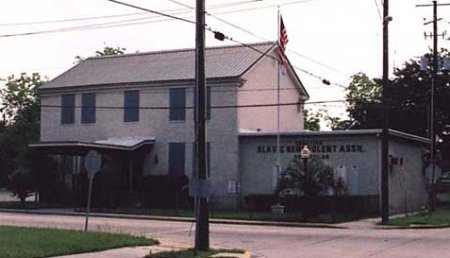

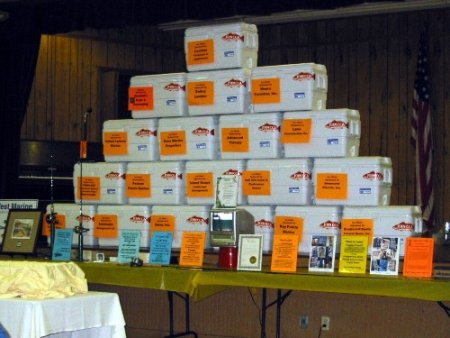

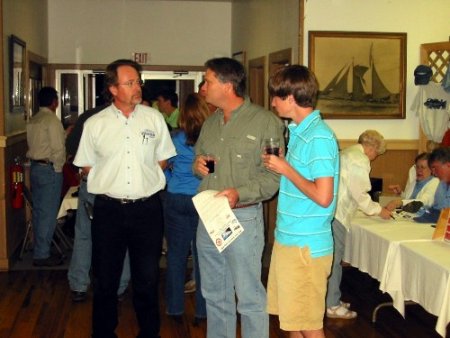
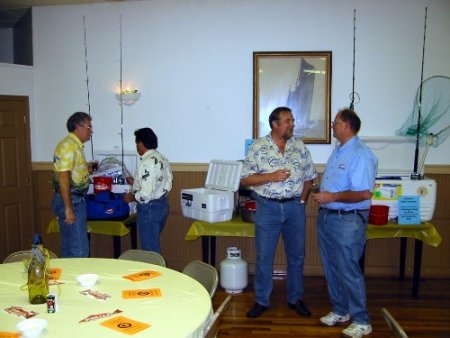

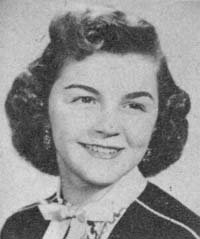

 Hill Billy Show
At Biloxi Sunday
Hill Billy Show
At Biloxi Sunday
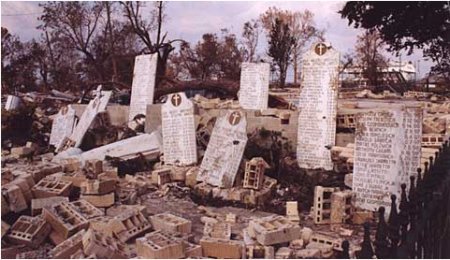


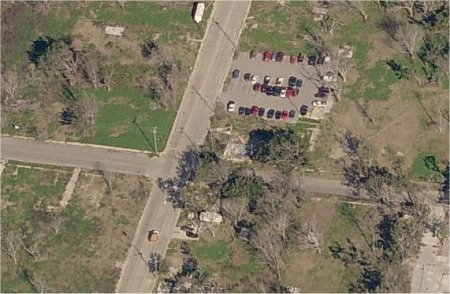



 Recording Star Elvis Presley At Airmen's Club
Recording Star Elvis Presley At Airmen's Club




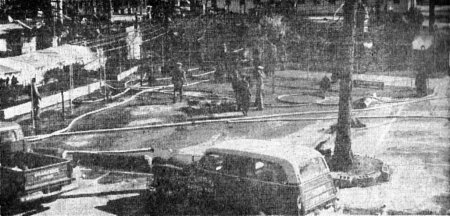


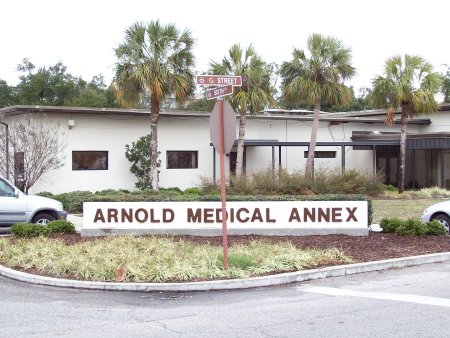
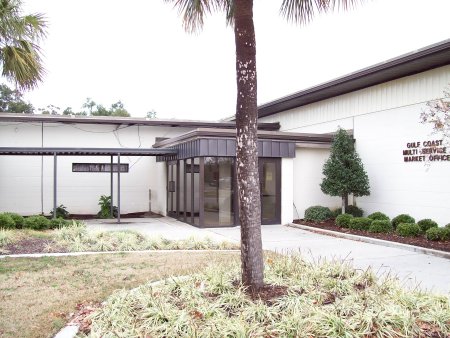
 Blood donor center
opens new facility
Blood donor center
opens new facility
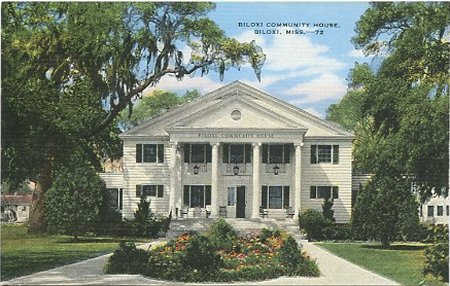

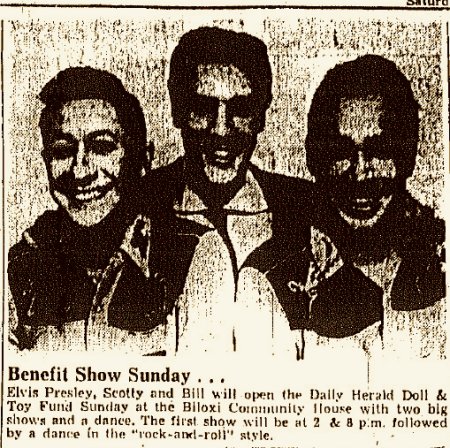
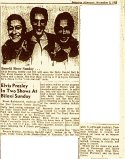 Elvis Presley In Two Shows At Biloxi Sunday
Elvis Presley In Two Shows At Biloxi Sunday